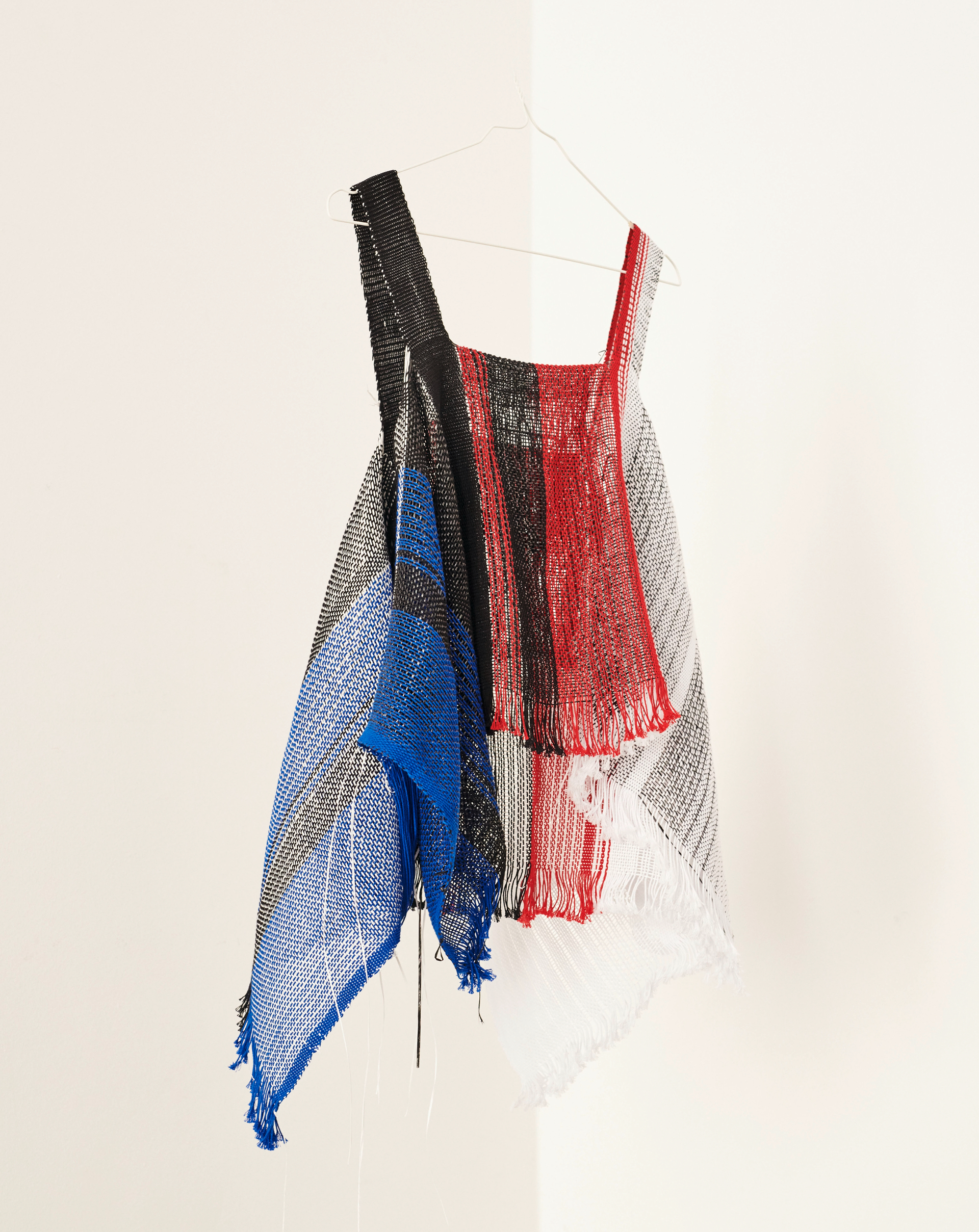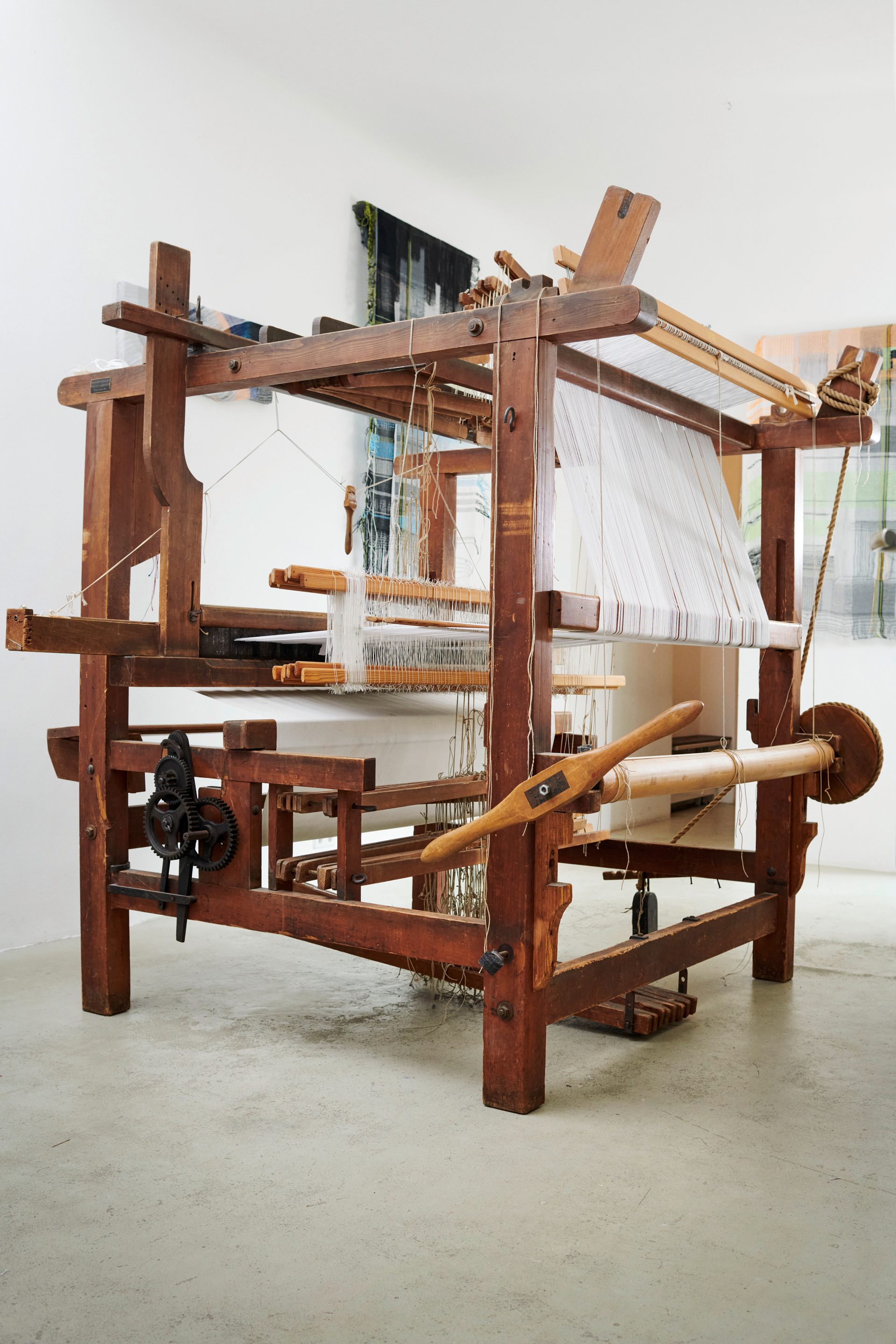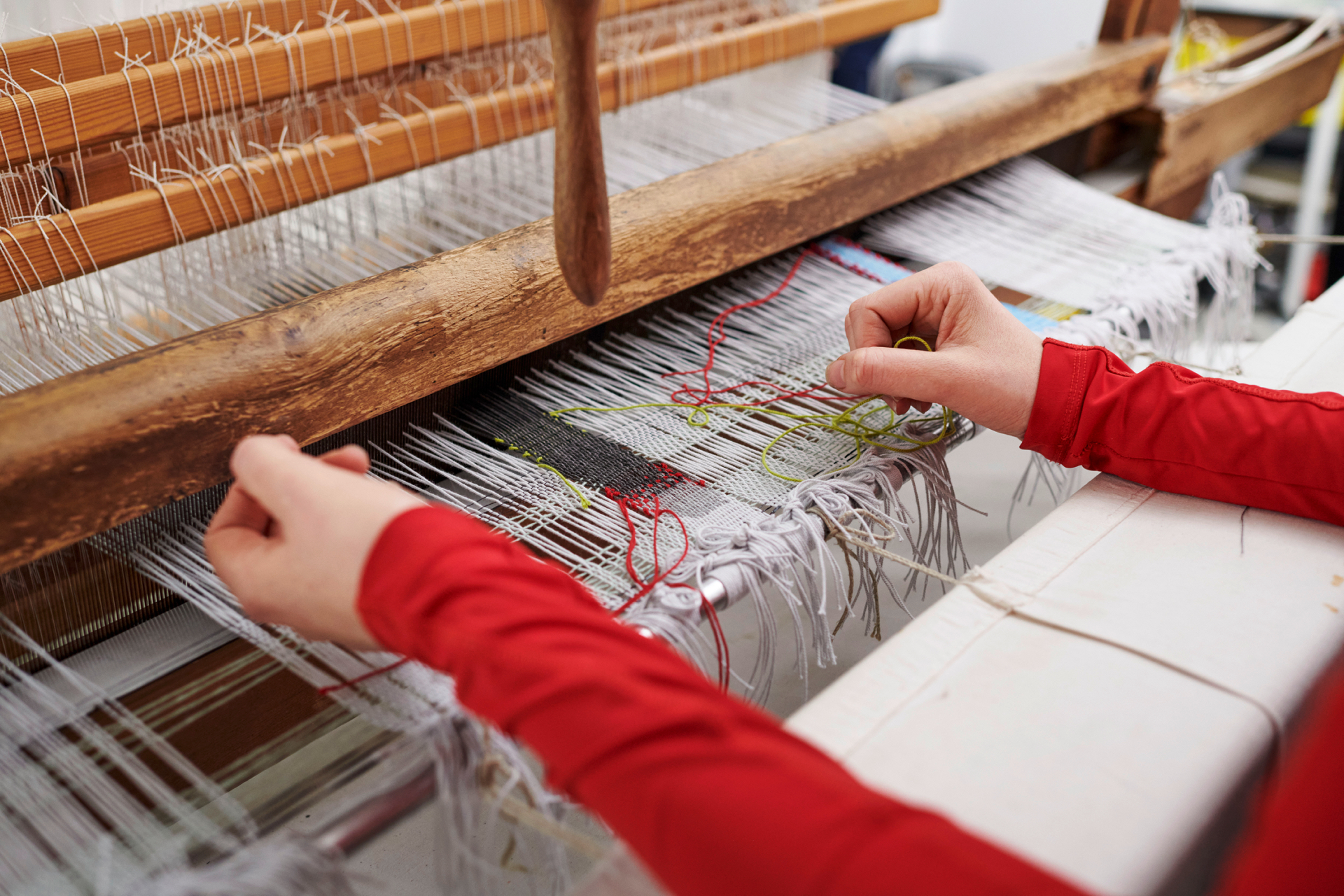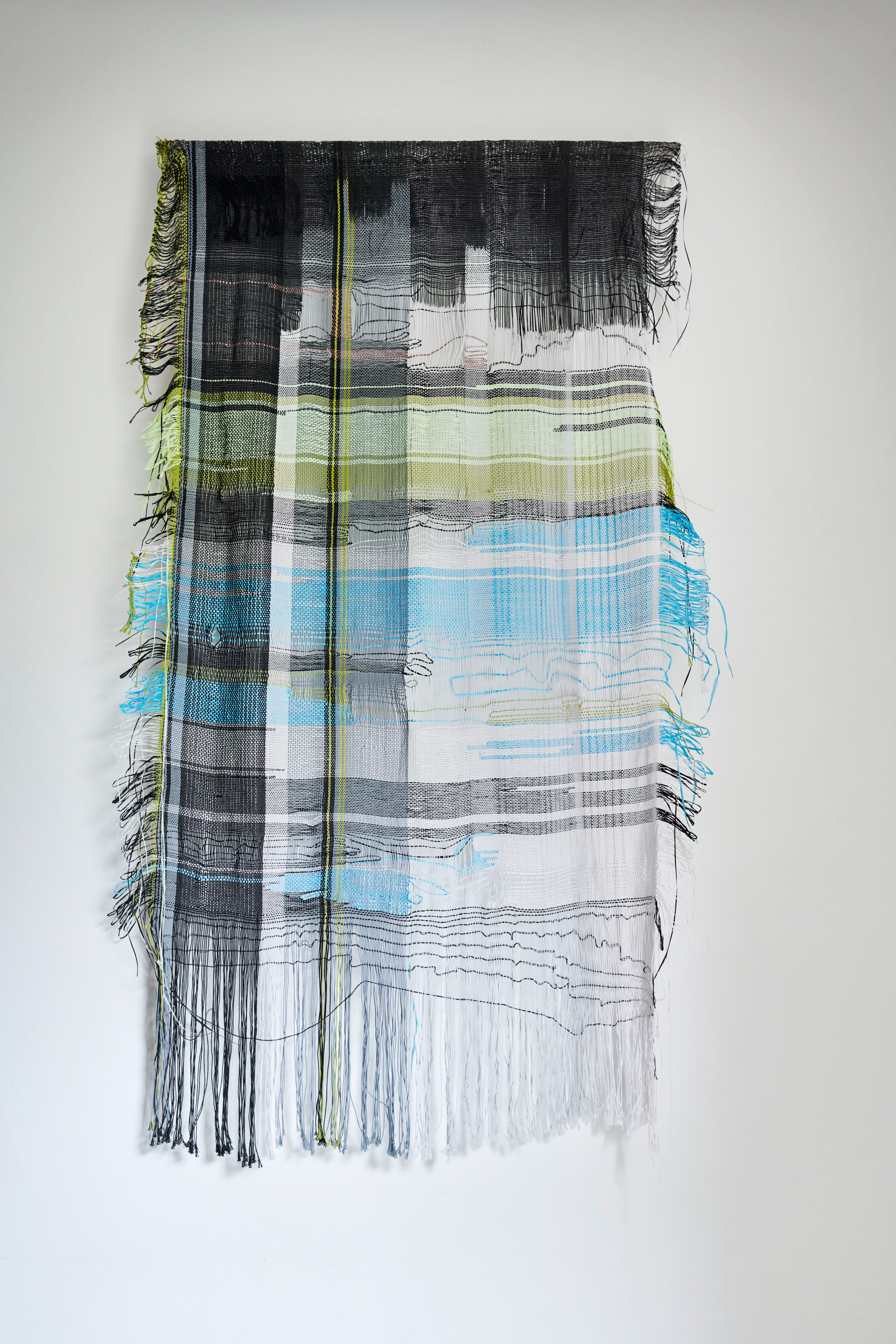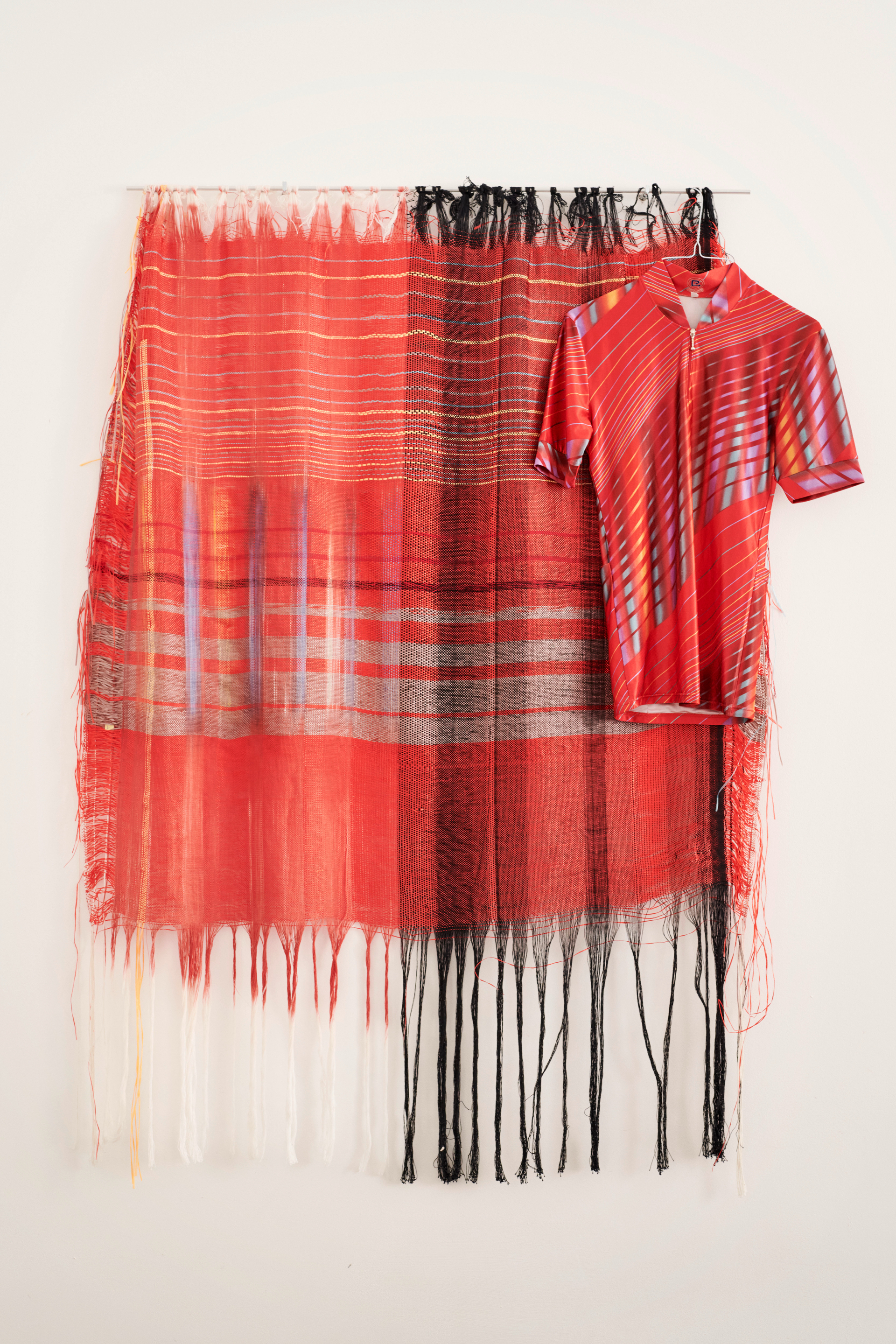Please tell us about your professional background.
I studied fashion design at the University of the Arts (UdK) and graduated in 2013. I have always had a strong focus on textile experimentation in my fashion collections, which led to the desire to weave and design almost all of my collection textiles myself for my diploma.
I was lucky enough to work for a textile design company in Paris directly afterwards. The company works for many luxury houses, and I had the task of making textiles for Chanel at the time, both sampling and designing.
I was always curious to learn about the fashion industry in all its facets and afterwards I also worked in production management, PR and different design teams. Since 2015 I also have my own studio, work in several collectives and have been an artistic lecturer at the UdK since 2016.
My focus in teaching is on textile development, designing intercultural exchange in fashion, and the transfer from experimental design to commercial application. Another focus for me is on gender identities in textile craft and art, which also feeds into my teaching.
As an artist, I was involved in the Bauhaus centenary exhibition in 2019.
The curator Nina Wiedemeyer was looking for tactile elements for the exhibition of Bauhaus weavers. There was the archive, but that could only be exhibited behind glass. My studio colleagues and I were asked to develop something that could be touched together with the Association of the Blind and Visually Impaired in Berlin. At that time we were four active designers in our studio. Each of us designed a metre of textile, which we put together to form a four-metre installation, all in black, which was very different from the very colourful archive wall.
In your work you are very much concerned with gender issues. How is this expressed in your work?
Simone de Beauvoir wrote as early as 1949 about the fact that women in patriarchy were assigned the textile work created in the domestic sphere (The Other Sex, 1949). Oskar Schlemmer said 100 years ago: "Where there is wool, there is also a woman." In my opinion, we still haven't made much progress, because many stigmas in textile work still exist. But I am often asked why I, as a woman, work in textile production at all - but for me that is precisely what is such a fascinating challenge.
I am currently reading Women, Art and Society by Whitney Chadwick, which examines how and where women artists are ignored in comparison to their male counterparts in art history and how hierarchies have been established. Engaging with these systems is important to me in my practice.
At the moment I am working on combining painting with weaving. For me, painting happens before the weaving process, by painting the unwoven warp threads - so I reverse the classical process, because I construct the canvas with or after the painting. I then construct some fabrics stretched tightly so that they can be read as paintings. I like the idea of a reference or wink to this male-dominated sixties construct of certain abstract painting.
Is Germany a good place to work in crafts?
If you look at England, for example, you notice that the hierarchies between art and craft are not as strong as in Germany. Craft is valued just as much as art, the creators are a community. I have the feeling that in the German protestant patriarchy there is little support for it, e.g. craft projects are not publicly promoted. In contrast, I have seen that the English Craft Council supports start-ups. This gives designers from the textile sector a better chance to position themselves on the market. In Germany, these conditions do not exist.
What does it look like to work at the interface between art, craft and design?
For me personally, there are no barriers between these disciplines, because one belongs to the other. I develop a lot of things with strategies from fashion, for example from collection development. For me, the challenge is more how others read my work. That's why I came up with the idea of giving each identity an individual name. For example, I can only write certain project proposals as an artist, and they often explicitly exclude designers - or vice versa.
Whitney Chadwick writes that the hierarchy between art, design and craft dates back to the Renaissance, when people began to distinguish between the fine arts and the lower arts - ceramics and textiles belong to this category. As a result, craftspeople were also structurally subordinated and their value was lost. Even today, one can see this strong impact, which is so problematic especially in intercultural exchange and work.
Can you tell us about your current work? Please also tell us about your project with woven textiles that can be worn without further processing.
I have always wondered if it is not possible to develop clothing directly on the loom - without having to sew it afterwards, as is already possible with knitting. I have tried to set up the loom with the tension of the weave density in such a way that a kind of strap is created in certain places. In all other parts, the material is woven differently again. I created a few pieces that you can actually put on directly. But some were a bit too experimental. The aim of this project is to create a wearable garment, not an (art) object.
For me, it is important to work sustainably, so that a woven garment lasts a long time and can be worn. If it goes in the direction of clothing, I also want to develop it completely so that it survives several cleaning processes and is not just an experiment that becomes deformed after being worn three times.
